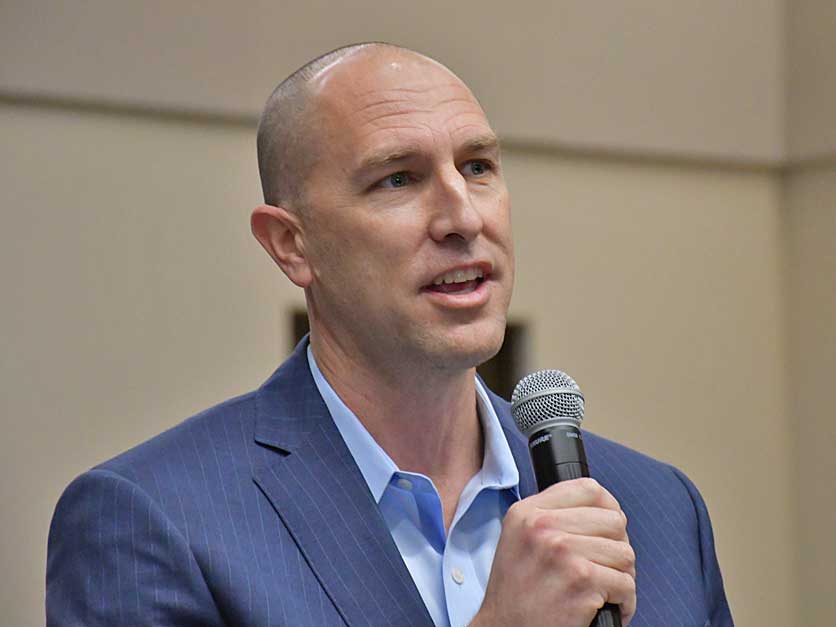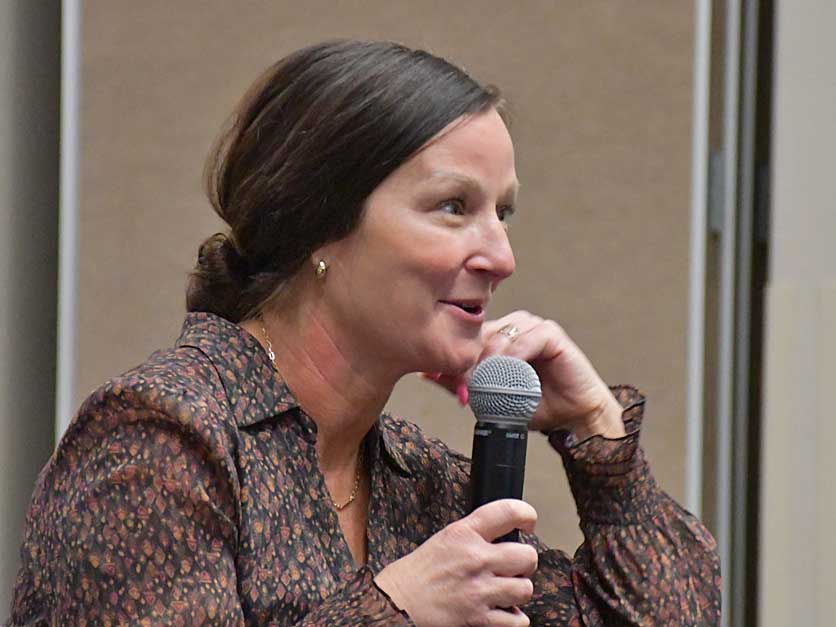With the growing clout of specialty crops in federal policymaking, USDA has launched an initiative to get more of the fruits and vegetables into the marketplace. The Agriculture Department is soliciting comments on how it can provide support to the industry through the Specialty Crops Competitiveness Initiative.
USDA has also set aside $65 million from the new Regional Agricultural Promotion Program (RAPP) to assist specialty crop exports. The department’s Agricultural Marketing Service, meanwhile, is dedicating $73 million for specialty crop block grants to enhance competitiveness and support marketing, education and research.
Jenny Lester Moffitt, USDA under secretary for marketing and regulatory programs, explained the new initiative to the State Board of Food and Agriculture at the World Ag Expo in Tulare earlier this month.
“How can we make sure our programs continue to meet the needs of today's specialty producers and specialty crop production in the future as well,” asked Moffitt. “Labor, water, pest, disease—there are so many different issues that specialty crop producers face. But there are also a lot of opportunities.”
She estimated that it is the first time USDA has compiled all its programs into one resource directory to assist farmers. The initiative’s webpage lists 69 programs.
“How do we make sure that our conservation programs, our services agency, our research programs, our rural development programs and then, of course, our programs at APHIS—and AMS that I provide leadership to—are really looking forward to the future?” she said. “What are they doing now? Where are they together?”
For Moffitt, the trip to California was a homecoming and a return to her roots as a specialty crop farmer and to her former boss, CDFA Secretary Karen Ross, who participates in the board hearings. The list of challenges presented at the hearing was not new to Moffitt.
 CFFA President Daniel Hartwig
CFFA President Daniel HartwigThe Wonderful Co., widely known for its almond, citrus and juice products, submitted a RAPP proposal a week before the hearing, according to Melissa Frank, who leads government affairs at the company.
“We often feel like we're somewhat forgotten at USDA,” Frank told Moffitt. “But we know that you won’t let them forget.”
Frank said trade disputes, retaliatory tariffs and export barriers have created significant challenges with moving products to market. As a result, once steady growth in China has plateaued. Supply chain issues have stalled exports of perishable products, leading to spoilage.
Daniel Hartwig, who recently took over as president of the California Fresh Fruit Association (CFFA), noted that invasive pest detections have jumped to an alarming rate over the past year. He pushed for more money to fund prevention efforts and for more research and development focused on expanding the available pest control tools. Tied to that is research into mechanization to reduce inputs as well as labor costs.
With rural development, Hartwig called for more infrastructure investments to support groundwater recharge to balance aquifer levels for both agriculture and communities. Electrical infrastructure in rural regions is falling behind in California’s transition to clean energy, he added.
It’s easy to be “in the know” about what’s happening in Washington, D.C. Sign up for a FREE month of Agri-Pulse news! Simply click here.
Dennis Nuxoll, vice president of federal government affairs at the Western Growers Association, also wanted a more strategic focus on mechanization and for USDA to evaluate the effectiveness of existing programs in this space. He also highlighted food safety as a major federal issue and urged USDA to break down its silos with FDA and the Centers for Disease Control to coordinate research and extension efforts and to shift attention to prevention and get beyond outbreak response.
With international trade, Nuxoll was frustrated that negotiators tend to punt issues over sanitary and phytosanitary standards to technical experts, which allows governments to use the process to delay rather than resolve disputes. He called for USDA to take the lead in kicking those discussions up to the trade negotiators and prevent them from languishing and being ignored.
Despite a strong push for conservation practices in the West, Nuxoll lamented that growers are typically unaware of the conservation grants at the Natural Resources Conservation Service and urged the department to proactively engage with them. He noted that the limit on adjusted gross income bars many California growers from participating and asked USDA to be more creative in working with the industry structure to take advantage of the grants.
Nuxoll also pressed USDA to tighten its oversight of the specialty crop block grant program to ensure all states are operating in a standard fashion. He criticized CDFA for not engaging with organizations and growers on an annual basis with the block grants, arguing that other states have made that a priority and been more responsive to the evolving needs of the fruit and vegetable industry.
Ross’ jaw dropped at the comment and she retorted that CDFA hosts listening sessions for all 400 of the crops included in the grants and offers seats on technical review committees for the trade groups. Nuxoll maintained that California operates differently from the other states where the association has members.
 Melissa Frank, The Wonderful Co.
Melissa Frank, The Wonderful Co.Jack Mariani, who owns the Mariani Nut Co.—and used to drive Moffitt to soccer practice—elaborated on the dismal state of walnut production. Along with tariffs in India and Turkey, growers dealt with a huge carryover in 2021, for a nut with a considerably shorter shelf life than almonds. A heat storm the following year tainted the nuts with a dark color, leading to rejections. Then a record crop led prices to drop by 50 cents a pound and stay that way for three years now. Farmers have pulled out more than 40,000 acres as a result.
“It's just such a struggle,” said Mariani. “We're desperate to find a solution.”
The industry needs to offload 60,000 tons to rebalance the market. He offered several suggestions, from an additional Section 32 purchase to cattle feed purchases, introducing walnuts as a new product within USAID or delivering some form of direct emergency relief to farmers.
Ian LeMay, who has transitioned from CFFA to serving as president of the California Table Grape Commission, ran through a long list of requests. He called for creating a domestic version of USDA's Market Access Program to motivate consumers to buy more homegrown produce and for assisting retailers in promoting to SNAP recipients.
With trade negotiations, he asked for stronger and more robust economic impact evaluations when considering foreign market access requests. USDA would assess the risks posed by invasive pests and diseases as well as the potential loss of farm revenue from an influx of imported products.
Kelly Damewood, CEO of California Certified Organic Farmers, saluted USDA’s comprehensive set of programs to support organic producers but said the department’s marketing efforts could go further by tapping into restaurants, schools and hospitals. She shared grower concerns about the lack of consumer understanding of organic products as more labels than ever clutter grocery shelves. She looked for ways that USDA could inform consumers of the level of integrity that goes into the organic program.
USDA is taking comments on the specialty crop initiative until March 8.
For more news, go to Agri-Pulse.com.


